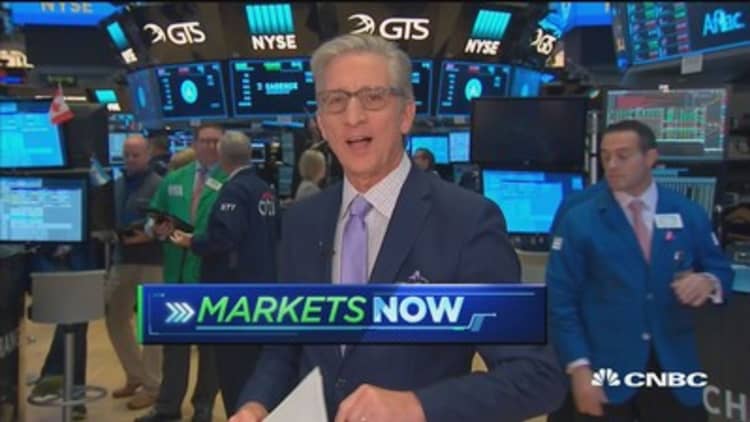A crisis that climaxed 20 years ago Friday rattled the NYSE floor and changed global investing.
For the first — and only — time, systemwide circuit breakers shut the market before the official 4 p.m. close.
It was 2:40 p.m. on Monday, Oct. 27, 1997, and the NYSE trading floor had shut down. The had dropped 554 points, at that time the biggest one-day point decline ever.
It was the climax of the Asian financial crisis, a summer that had seen the economies of countries including Thailand, South Korea, Malaysia, Indonesia and the Philippines brought almost to their knees as the tidal wave of money that poured into their countries in prior years flowed out.
The usual dull roar of traders shouting at each other was gone. They were standing around in small groups, chatting quietly. The specialists weren't typing, the traders weren't trading. One specialist had a New York Post draped over his keyboard.
I had walked onto the floor at 2:40 p.m. from my office upstairs. It was an eerie sight. For the first time, the NYSE and Nasdaq had halted trading systemwide.

It was the first — and only — test of the new so-called circuit breakers. Following the recommendations of the Brady Commission that investigated the causes of the October 1987 market crash, the exchanges had instituted circuit breakers in 1988. These new regulations required the markets to pause for 30 minutes if the Dow dropped 350 points. Another circuit breaker would halt trading for an hour if it dropped 200 more points, but could close the market if it happened in the last hour.
That 350-point drop was reached at 2:36 p.m., and trading had been halted. When the markets reopened at 3:05 p.m., the Dow dropped 200 more points in 25 minutes. The markets were halted again at about 3:30 p.m. and did not reopen.
The decision to close early was controversial. Many felt that trading should not have been halted initially with the Dow down 350 points, which was a decline of only 4.5 percent.
An SEC commission that looked into the causes of the crash agreed: "The circuit breaker thresholds needed to be raised significantly from those in place on October 27."
The commission was especially critical of the early close, saying it did not appear to have been necessary. "Moreover," it added, "investor concerns that the second circuit breaker would close the market may have accelerated the price declines in the last 24 minutes."
That night, after doing CNBC's "Business Center" from the floor, I went back to the studio in Fort Lee, New Jersey, to wait for the Hong Kong market to open at 9 p.m. It was looking ugly. In that session, the Hang Seng dropped 14 percent, the Nikkei 4 percent.
I later wrote that the NYSE opening on Tuesday was "an all-time nail-biter." The Dow began to slide early on, but the traders were unanimous in not wanting to see a repeat of Monday's early closing. "If it takes a bloodbath again to find a bottom, let's do it," one trader told me, "but no more closing early."
The Dow ultimately rebounded, closing up 337 points, at that time the largest single-point gain in NYSE history. Some 1.21 billion shares changed hands, the first time the NYSE had seen a billion share day. The Nasdaq also traded at a record — 1.23 billion shares.
The circuit breakers were later widened. Today, trading will halt systemwide when the S&P drops 7 percent initially, which would be a drop of about 175 points; the Dow equivalent would be more than 1,600 points.
But the systemwide halt was only triggered on that one day—Oct. 27, 1997.


